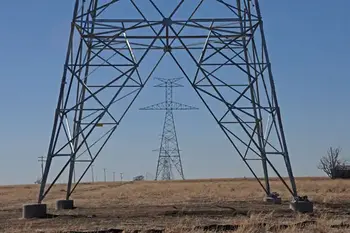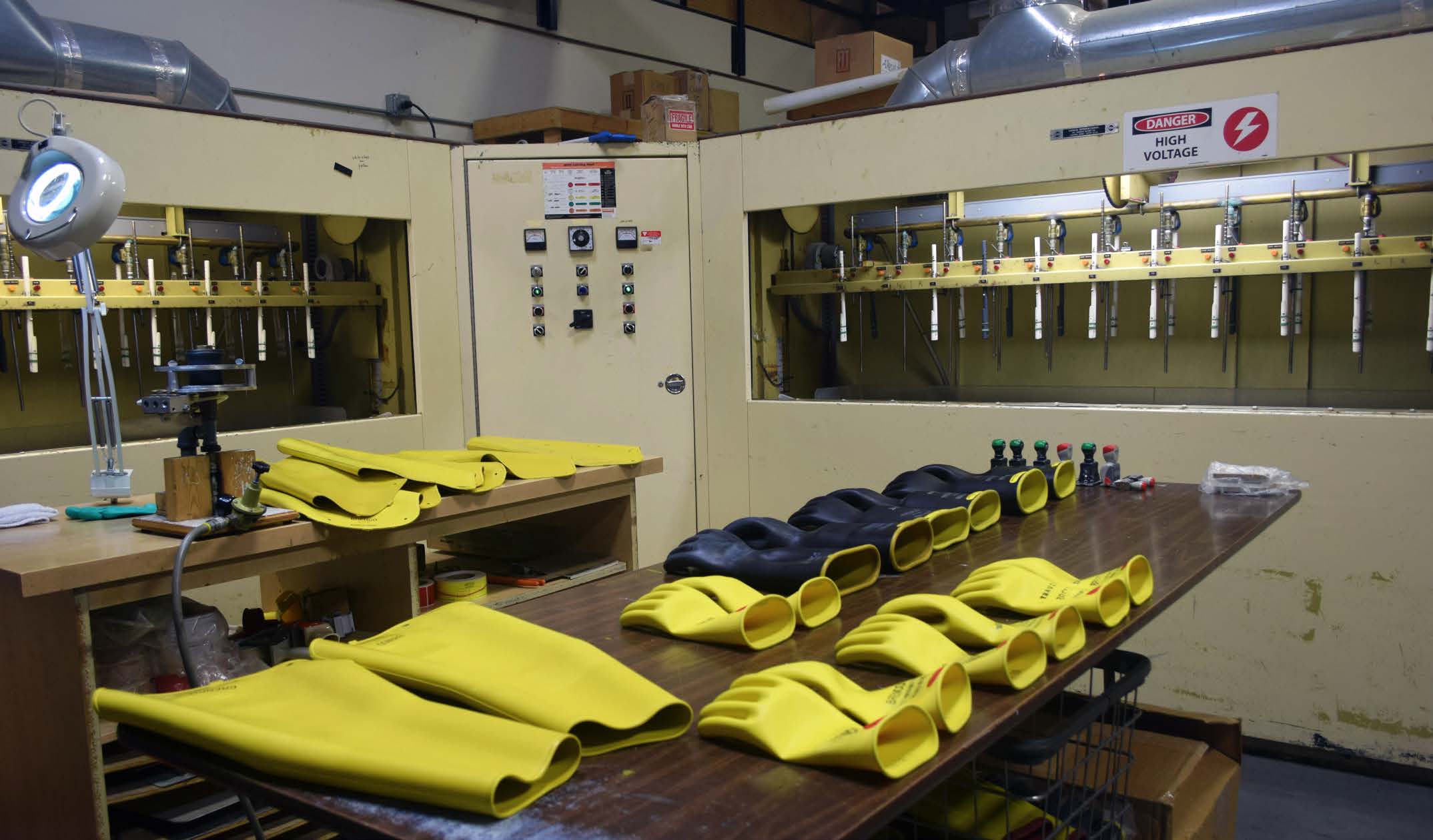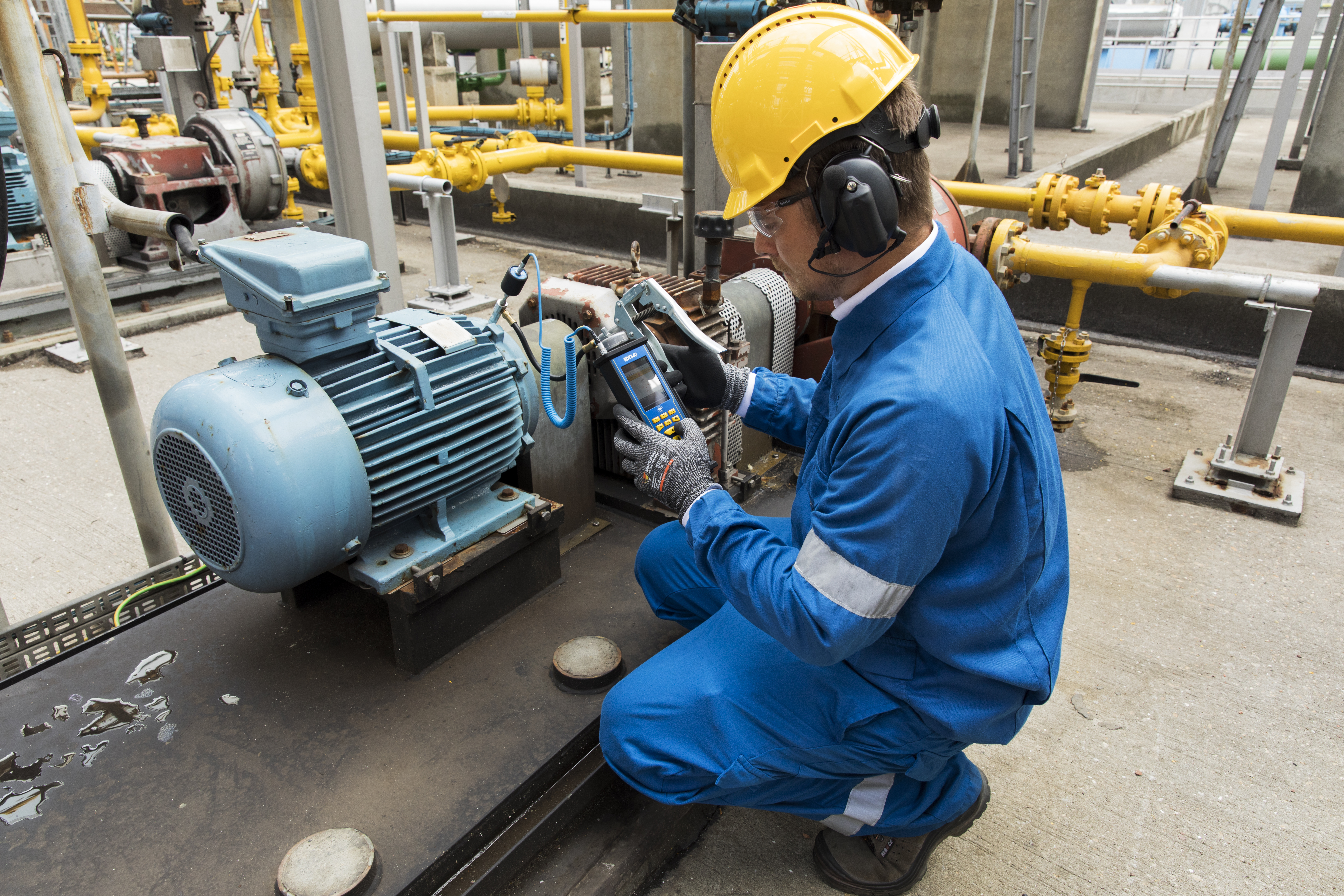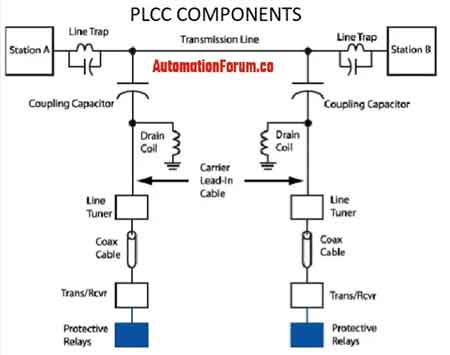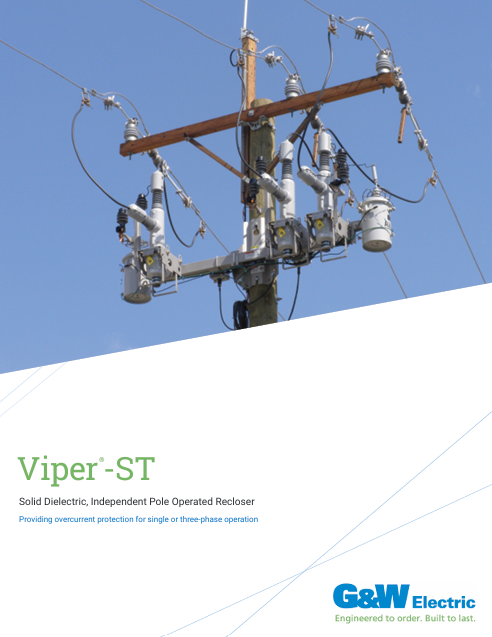Compressed Air Energy Storage
By R. W. Hurst, Editor

Battery Energy Storage Testing and Maintenance for Solar PV Systems
Our customized live online or in‑person group training can be delivered to your staff at your location.
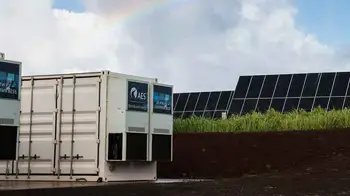
- Live Online
- 12 hours Instructor-led
- Group Training Available
Download Our NFPA 70E Fact Sheet – 2024 Electrical Safety Edition

- Understand how NFPA 70E works with NEC and NFPA 70B standards
- Clarify the shared responsibility between employers and employees
- Learn how NFPA 70E supports OSHA compliance
Compressed air energy storage stores electricity by compressing air in underground caverns or tanks and releasing it later through turbines. It supports the integration of renewable energy, grid stability, and efficient large-scale storage for industrial and utility systems.
What is Compressed Air Energy Storage?
Compressed air energy storage (CAES) is a method of storing energy by compressing air, releasing it later to generate electricity.
✅ Provides large-scale renewable energy storage
✅ Enhances grid stability and efficiency
✅ Supports long-duration storage technologies
Energy Storage Systems Training
Compressed air energy storage technology is a promising solution to the global energy storage (ES) challenge. It offers high storage capacity, long system life, and clean operation. While energy efficiency remains relatively low and installations require specific geological conditions, its advantages often outweigh the drawbacks, making CAES a viable option for balancing electricity supply and demand from renewable sources. With continued innovation, CAES is expected to play an increasingly significant role in long-duration ES. Compressed air energy storage is part of the wider family of energy storage technologies that help balance electricity supply and demand across modern power grids.
Types of Compressed Air Energy Storage (CAES)
There are several configurations of CAES, each with distinct features and trade-offs:
-
Diabatic CAES: The most common design, used in existing plants like Huntorf, Germany. Heat from compression is released into the environment, reducing round-trip efficiency to around 40–55%.
-
Adiabatic CAES (A-CAES): Stores the heat generated during compression in thermal storage systems, later reusing it during expansion. Efficiency improves significantly, often projected above 65%.
-
Isothermal CAES: Maintains near-constant temperature during compression and expansion, reducing losses. Still largely experimental due to technical challenges.
-
Hybrid CAES: Combines CAES with batteries, hydrogen, or other storage systems, improving flexibility and overall efficiency.
Understanding how CAES fits into energy storage and the grid highlights its role in integrating renewable energy, shaving peaks, and stabilizing frequency.
Sign Up for Electricity Forum’s Energy Storage Newsletter
Stay informed with our FREE Energy Storage Newsletter — get the latest news, breakthrough technologies, and expert insights, delivered straight to your inbox.
Real-World Examples of CAES Projects
-
Huntorf, Germany (290 MW, commissioned 1978): The world’s first grid-connected CAES plant, used primarily for peak shaving.
-
McIntosh, Alabama, USA (110 MW, 1991): Introduced natural gas-fired turbines for reheat, improving efficiency.
-
Hydrostor (Canada): A leading developer of adiabatic CAES projects, leveraging salt caverns and advanced thermal storage.
-
Nengchu-1, China (300 MW, 2022): A new large-scale CAES project highlighting Asia’s growing role in grid-scale storage.
These plants demonstrate CAES’s proven long-duration capability, with storage durations ranging from 4 to 24 hours and performance measured by capacity factor, grid support, and dispatch reliability.
How does Compressed Air Energy Storage work?
CAES technology stores energy by compressing air to high pressure in storage vessels or caverns, where it can be held for hours or even days. When demand rises, the compressed air is released, passes through turbines, and generates electricity.
Heat generated during compression, often wasted in early systems, can be captured in thermal ES and reused. This increases round-trip efficiency, typically raising it into the 60–70% range in advanced systems. Still, off-design performance, heat transfer losses, and pressure drops remain significant engineering challenges.
Advantages of Compressed Air Energy Storage
CAES technology has several advantages over other ES systems. Firstly, it has a high storage capacity, allowing it to store energy for extended periods. Secondly, it is a clean technology that doesn't emit pollutants or greenhouse gases during energy generation. Additionally, CAES systems can be located near power plants or the electricity grid, reducing transmission losses and increasing trip efficiency.
-
High storage capacity: Suitable for multi-hour to seasonal storage.
-
Clean technology: Produces no emissions during storage or release.
-
Durability: Systems have long operational lifetimes, often 30+ years.
-
Grid-scale application: Can stabilize frequency, reduce transmission losses, and integrate with renewables.
Like CAES, battery energy storage systems are widely used, but they are more effective for short-duration applications rather than multi-hour or seasonal storage.
Compressed Air Energy Storage (CAES) vs Other Energy Storage Systems
Various energy storage systems are available, including pumped hydro, battery energy storage, flywheel energy storage, thermal energy storage, hydrogen energy storage, supercapacitor energy storage, compressed natural gas (CNG) storage, and mechanical energy storage. Let's compare CAES with some of these systems.
Pumped hydro is one of the oldest and most widely used energy storage systems. It uses the gravitational potential energy of water stored at a height to generate electricity. However, the construction of pumped hydro energy storage systems is expensive and requires specific geographic conditions.
Battery is another popular system that uses chemical energy to store electricity. It is a highly efficient system with a low discharge rate but limited storage capacity and high costs.
Flywheel systems store energy in a rotating flywheel, which can be later used to generate electricity. They have a low discharge rate and can respond quickly to changes in demand. However, they have a low storage capacity and high initial investment costs. Researchers also compare CAES with alternative mechanical systems, including flywheel energy storage and gravity energy storage, each offering unique performance characteristics.
Thermal systems store energy in the form of heat, which can later be converted into electricity. Therefore, they have a high storage capacity and can be used for heating and cooling. However, the efficiency of the system depends on the type of material used for thermal energy storage.
Hydrogen systems store energy in the form of hydrogen gas, which can later be converted into electricity. It is a clean and efficient system, but it has limited storage capacity and requires expensive equipment. Long-term solutions, such as CAES, are essential when compared with other approaches, like hydrogen energy storage, which is clean but currently more costly and less efficient.
Test Your Knowledge About Energy Storage!
Think you know Energy Storage? Take our quick, interactive quiz and test your knowledge in minutes.
- Instantly see your results and score
- Identify strengths and areas for improvement
- Challenge yourself on real-world electrical topics
A compressed natural gas (CNG) storage system stores energy in the form of compressed natural gas. It has a high storage capacity and can be used for heating and transportation. However, the conversion process is expensive and emits greenhouse gases during the process.
Supercapacitor systems are capable of storing and releasing large amounts of energy in a short time. They have a long life cycle, but a low energy density and limited storage capacity.
CAES technology offers a viable solution to the energy storage problem. It has a high storage capacity, is a clean technology, and has a long life cycle. Additionally, it can utilize existing natural gas infrastructure, reducing initial investment costs.
Comparison of Energy Storage Systems
| Feature | CAES | Pumped Hydro | Lithium-ion Battery Storage |
|---|---|---|---|
| Technology type | Mechanical (compressed air in caverns or tanks) | Mechanical (water stored at elevation) | Electrochemical (chemical-to-electrical conversion) |
| Typical efficiency | 45–70% (higher in adiabatic designs) | 70–85% | 85–95% |
| Storage duration | 4–24 hours (potentially days with large caverns) | 6–20 hours | Minutes to ~8 hours |
| Capital cost | $1,000–1,500/kW | $1,500–2,500/kW | $400–800/kWh |
| Scale | 50–500 MW (utility-scale) | 100 MW–1 GW (large infrastructure) | 1 kW–100 MW (flexible deployment) |
| Geographic requirements | Underground salt caverns, porous rock, or tanks | Significant elevation difference and water availability | Few site restrictions, deployable almost anywhere |
| Lifetime | 30–40 years | 40–60 years | 8–15 years |
| Best applications | Long-duration grid storage, renewable integration, peak shaving | Bulk storage, baseload shifting, seasonal storage | Short-duration storage, fast response, frequency regulation |
Economic and Cost Considerations
CAES economics depend on site geology, capital cost, and market conditions. Estimated capital costs range between $1,000 and $ 1,500/kW, with round-trip efficiencies of 45–70%. While batteries dominate short-duration markets, CAES offers lower costs for long-duration storage compared to lithium-ion batteries at scales of 8 hours or more. Pumped hydro remains the closest competitor, but CAES requires less topographical limitation if suitable caverns are available.
Key cost drivers include cavern construction, compressor/turbine efficiency, and electricity prices. Research shows CAES becomes more competitive in systems with high renewable penetration and volatile market pricing.
CAES Compared with Other Energy Storage Systems
-
Pumped Hydro: Mature and efficient but geographically limited.
-
Batteries: High efficiency and flexibility, but expensive at long durations.
-
Flywheels: Fast response but low storage capacity.
-
Thermal Storage: Ideal for heat applications; efficiency varies depending on the materials used.
-
Hydrogen: Clean but less efficient and more costly at present.
A comparison shows that CAES is uniquely positioned for grid-scale, long-duration ES, where geology supports it. The importance of CAES becomes clear when viewed in the context of long-term energy storage, where extended duration and grid reliability are critical.
Challenges and Limitations of CAES
-
Low efficiency compared to batteries (60–70% vs 85–95%).
-
Site limitations: Requires salt caverns or porous rock formations.
-
Geological risks: Cavern fatigue, leakage, sealing, and stress cycling.
-
Environmental impact: Land use, embodied energy, and potential CO₂ footprint.
-
High upfront costs and regulatory complexity for permitting.
As global demand rises, innovations in CAES contribute to the overall growth in utility-scale energy storage, positioning it as a leading solution for future energy systems.
Integration with Renewables and the Grid
CAES complements variable renewables, such as wind and solar, by storing excess energy and providing power during periods of peak demand. Applications include:
-
Shifting renewable output to match demand patterns.
-
Peak shaving and demand response to reduce grid strain.
-
Frequency regulation and ancillary services for grid stability.
-
Hybrid integration with batteries or hydrogen for flexibility.
This makes CAES attractive for energy arbitrage and balancing in high-renewable systems.
Future Outlook for Compressed Air Energy Storage
CAES is evolving through research into adiabatic and isothermal systems, improved thermal ES, advanced materials for compressors/expanders, and hybrid designs combining CAES with batteries or hydrogen. Policy incentives, carbon pricing, and long-duration storage mandates are expected to accelerate deployment.
Research gaps remain in cost reduction, long-term testing, and commercialization. Still, as of 2025, CAES is positioned as one of the most promising long-duration ES technologies for the future grid.
Frequently Asked Questions
What type of energy is stored in compressed air?
CAES stores potential energy in pressurized air. When released, the air expands through turbines, generating electricity.
What is the main problem with CAES?
The main drawback is low efficiency due to heat losses during compression and the high energy needed for re-compression.
How efficient is CAES?
Typical CAES systems achieve an efficiency of 60–70%, depending on the configuration and site conditions.
Where can CAES be built?
Most systems require salt caverns or underground formations, which limit the number of available installation sites but enable large-scale storage in suitable locations.
Related Articles






